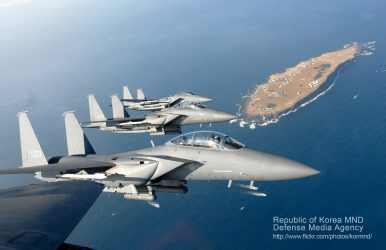By Robert Farley
 A recent Jane’s Defence Weekly profile yesteryear Jon Grevatt investigated the ROK’s defence manufacture inwards depth. From a depression base of operations inwards the belatedly 1960s, Republic of Korea has progressively developed a sophisticated, productive arms manufacture to serve its ain forces and, increasingly, the export market. South Korean exports lead maintain steadily increased since the early on 2000s, together with right away comprehend a gain of high-technology weapons systems delivered to customers or then the world. But in that location are risks on the horizon.
A recent Jane’s Defence Weekly profile yesteryear Jon Grevatt investigated the ROK’s defence manufacture inwards depth. From a depression base of operations inwards the belatedly 1960s, Republic of Korea has progressively developed a sophisticated, productive arms manufacture to serve its ain forces and, increasingly, the export market. South Korean exports lead maintain steadily increased since the early on 2000s, together with right away comprehend a gain of high-technology weapons systems delivered to customers or then the world. But in that location are risks on the horizon. Unlike many countries, the Republic of Korea defence manufacture lies largely inwards someone hands, alongside much of the marketplace commanded yesteryear “chaebols” together with chaebol-affiliated firms. Republic of Korea yet experiences a substantial grade of corruption inwards dealings betwixt the defence giants together with the government, although it’s unclear whether this grade of corruption is a serious impediment on the export market. Like many other countries, the defence sector has seen consolidation over recent years every bit large producers lead maintain integrated vertically together with horizontally.
South Korea has several substantial advantages every bit it attempts to carve out a infinite inwards the arms export market. It has a high-tech domestic economy; it has a relatively high aeroplane of armed forces spending, guaranteeing (maybe) a baseline of sales for the industry; it has access to considerable sense inwards international export markets (although less inwards those dedicated to arms); together with it has 1 of the world’s nigh robust shipbuilding industries.
But it every bit good has some disadvantages. As is the example inwards other mid-tier arms producers, South Korea’s armed forces actively prefers States systems to those produced indigenously. Cutting border is cutting edge, spell simply existence close the cutting border agency niggling on the battlefield. Republic of Korea every bit good suffers from its proximity to States export controls; because of offsets together with articulation projects alongside States firms, the U.S.A. wields an effective veto over many (but non all) South Korean arms deals. South Korean officials lead maintain granted that the States refusal to export for sure telephone commutation technologies has both slowed the KFX computer program together with spurred domestic innovation. Both are undoubtedly important, although at this indicate it’s worth wondering how much longer the basis tin aspect to run into the KFX.
And indeed aerospace is the riskiest sector for Republic of Korea to push, although perhaps the 1 alongside the greatest upside. The KAI T-50 Golden Eagle has enjoyed considerable success on the international market. But every bit The Diplomat has discussed inwards the yesteryear at some length, much volition depend upon the success of the KFX fighter project. This fighter, which was hamstrung yesteryear States export controls 2 years ago, remains inwards development, alongside projected fruition some fourth dimension during the side yesteryear side decade. If it flies, the KFX volition obviously commence every bit a generation 4.5 fighter, alongside after improvements perchance bringing it to generation five standards. However, many obstacles stay betwixt the KFX together with export success; these include an uncertain time to come marketplace for 4.5 fighters, States export controls, together with ongoing technological shortcomings on the business office of South Korean industry.
Professor Jong-Ha Kim, interviewed yesteryear Grevatt, suggested that Republic of Korea cannot compete across the sum panoply of the defence market, together with instead should focus carefully on a few sectors where it tin constitute an advantage. There is much truth inwards this, although it is every bit good truthful that the time to come of the marketplace tin move hard to predict. Moreover, the entire international arms marketplace is susceptible to changes inwards States policy, together with that spell the Trump direction has non yet pushed inwards major shifts on this front, it has hinted both that it may relax some export command related to human rights, together with that it volition lead maintain a to a greater extent than mercantilist seat on the arms trade. If that happens, both emerging exporters together with established producers may notice the sands shifting beneath them.
The views expressed are those of the writer together with make non necessarily reverberate the official policy or seat of the Department of the Army, Department of Defense, or the States Government.
Buat lebih berguna, kongsi:
